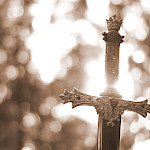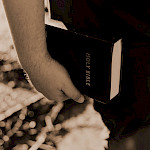Great Archaeological Discoveries in Israel
|
"For ever, O LORD, thy word is settled in heaven." (Psalm 119:89) The return of the Jews to the land of Israel and the establishment of the modern state has been a huge boost to apologetics. Since the twentieth century, archaeologists have discovered site after site and artifact after artifact pertaining to and confirming biblical history. Following are some prominent examples: Dead Sea Scrolls - discovered in the 1940s, the biblical scrolls, such as the Great Isaiah Scroll, are the oldest Hebrew Scriptures extant and prove that the Hebrew Bible has been preserved in great detail. The Great Isaiah Scroll was discovered in 1947, one year before the founding of modern Israel. It is preserved at the Israel Museum’s Shrine of the Book. Temple Mount Excavations. The excavations on the southern end of the Temple Mount since 1967 have unearthed the Titus Stones, the Trumpeting Place stone, the Southern Steps, and the ancient Pilgrim’s Way from the City of David to the Temple, among many other things dating to the Second Temple era. Roman Siege of Jerusalem. In 2016, a portion of a "third wall" mentioned by Josephus was found, and outside the wall the ground is still littered with ballista and sling stones from the battle of AD 70. Hezekiah’s Tunnel. This tunnel from the Gihon Spring to the Pool of Siloam was built by King Hezekiah to supply water to Jerusalem during the Assyrian siege and is mentioned in 2 Ki. 20:20 and 2 Ch. 32:30. The 1,750-foot tunnel (one-third of a mile) is from 2 to 3 feet wide and from 5 to 15 feet high. The building of the tunnel was an amazing engineering feat. Teams of men tunneled from both directions through solid rock, and yet a near constant gradient of .6% was maintained. The tunnel was discovered in 1867 by Charles Warren, a British explorer and army officer, when the land of Israel was under control of the Ottoman Empire. In 1880 an inscription was discovered that had been chiseled in the tunnel to commemorate its completion. It was removed and taken to Istanbul, where it resides in the archaeological museum. The inscription reads: "[The day of] the breach. This is the record of how the tunnel was breached. While [the excavators were wielding] their pickaxes, each man toward his co-worker, and while there were yet three cubits for the brea[ch,] a voice [was hea]rd each man calling to his co-worker; because there was a cavity in the rock (extending) from the south to [the north]. So on the day of the breach, the excavators struck, each man to meet his co-worker, pick-axe against pick-[a]xe. Then the water flowed from the spring to the pool, a distance of one thousand and two hundred cubits. One hundred cubits was the height of the rock above the heads of the excavat[ors]." Hezekiah’s Wall. In 1970, a remnant of the wall built by Hezekiah in preparation for the siege of Assyria was discovered. It is about 23 feet thick and still stands up to 10 feet tall. It is mentioned in 2 Ch. 32:5. Hezekiah’s Seal. In 2009, a seal (bulla) bearing the name of King Hezekiah was discovered in the Ophel area between the Temple Mount and the City of David. It was discovered in the area of the ancient royal bakery. The inscription says, "Belonging to Hezekiah (son of) Ahaz king of Judah." The seal was identified in 2014. Dr. Eilat Mazar called this the most important individual discovery of her career, which is saying a lot, since she discovered David’s palace. Isaiah’s Seal. In 2018, it was announced that a seal bearing the name of "Isaiah" had been found in the same area as the aforementioned Hezekiah seal. The name is followed by a word that is probably "prophet," though a missing letter means the identification is not 100% certain. The date and location point to the biblical prophet Isaiah. We know that Isaiah was intimate with the palace and was a close advisor to the king. The Isaiah seal was found in 2009 at the same time as the Hezekiah seal, but it was not identified until 2018. An interview with Dr. Mazar can be seen at the following link - www.thetrumpet.com/16947-has-eilat-mazar-discovered-archaeological-evidence-of-isaiah-the-prophet. Pool of Siloam. The ancient Pool of Siloam was discovered in 2004 and has been partially excavated. This pool is mentioned three times in the Bible (Ne. 3:15; Isa. 8:6; Joh. 9:7). Solomon’s Gates. The Bible says Solomon built Hazor, Megiddo, and Gezer into royal military cities (1 Ki. 9:15), and the ruins of the massive six-chambered gates built by Solomon have been found at each of these places. David’s Palace. In 2005, Dr. Eilat Mazar, granddaughter of Benjamin Mazar and a prominent authority on Jerusalem’s ancient archaeology in her own right, discovered the ruins of what is believed to be David’s palace. It is located in the right place in the ancient City of David, and she found evidence that the building was occupied up until the destruction of Solomon’s temple by the Babylonians. The palace was built above a massive stepped-stone structure that is still partly intact. This is probably the "Millo" mentioned seven times in Scripture (2 Sa. 5:9; 1 Ki. 9:15, 24; 11:27; 12:20; 1 Ch. 11:8; 2 Ch. 32:5). The building discovered by Mazar is a large, complicated structure of engineering excellence and its date is confirmed by pottery shards, storage jars bearing the royal seal of the king of Judah, and a Proto-Aeolic capital, among other things. Uzziah’s Inscription. This plaque was made to mark the new burial place of King Uzziah. He died in the 8th century BC and his tomb was moved in the 1st century BC. The inscription is in Aramaic and reads, "Hither were brought the bones of Uzziah, King of Judah. Do not open!" Shema’s Seal Mentioning Jeroboam. There is a seal inscribed with "Belonging to Shema servant of Jeroboam." This is King Jeroboam. It was found at Megiddo and has been dated to the first half of the 8th century BC. Jeremiah Bullae. Discovered in the area of David’s Palace and the City of David are bullae (clay document seals) bearing the names of people mentioned in the books of Jeremiah, Kings, and Chronicles who lived or worked in the palace just before it was burned by Nebuchadnezzar. These include Jehucal the son of Shelemiah (Jer. 37:3), Gedaliah, son of Pashur (Jer. 38:1), Gemariah the son of Shaphan (Jer. 36:10), and Azariah the son of Hilkiah (1 Ch. 9:11). The most recent find of this type, announced in April 2019, is a seal impression that reads "Belonging to Nathan-Melech, servant of the king." He is mentioned in 2 Kings 23:11 as having a chamber in the Temple that was associated with the worship of the sun in the court of Josiah. The 7th century BC seal impression was found on the western slope of the City of David south of the Temple Mount in a building that shows evidence of having been destroyed by the Babylonians in the 6th century. Jeremiah Ostraca. In the 1930s an archaeological team led by J.L. Starkey discovered 21 ostraca (letters written on pieces of pottery) in the excavations of the ancient city of Lachish, which was one of the last cities to fall to the Babylonians in Jeremiah’s day (Jer. 34:7). Most of the letters are written by Hoshaiah, a military officer stationed at an observation point not far from Lachish, and are addressed to his commanding officer, Yaosh. They are written in "perfect classical Hebrew." They mention Gemariah (Jer. 36:10), Jaazaniah (Jer. 35:3), Neriah Baruch (Jer. 36:4), and Mattaniah (King Zedekiah, 2 Kings 24:17). Letter No. 3 mentions "a prophet" who was demoralizing the people by calling on them to submit to the Babylonians. This is eerily reminiscent of events in Jeremiah’s life (see Jeremiah 38:1-4). The letters witness to the same situation described in Jeremiah 34:7, that Lachish and Azekah were the last cities to fall to the Babylonians. "Striking confirmation of the fact that these two cities were among those still holding out is furnished by the Lachish Letters. Letter No. 4, written by an army officer at a military outpost to his superior officer at Lachish, says ‘We are watching for the signals of Lachish according to all indications which my Lord has given, for we cannot see Azekah.’ This letter not only shows us how Nebuchadnezzar’s army was tightening its net around the land of Judah, but also evidences the close relationship between Lachish and Azekah, which are similarly linked in the book of Jeremiah" (J.P. Free, Archaeology and Bible History). Hazor. Evidence of the destruction of Hazor by Joshua as recorded in Jos. 11:11-13 was found in the 1990s. The heat of the burning was so great that it cracked heavy stone slabs. A one-meter thick layer of ash was found. Also found at Hazor are idols, olive and wine presses, city walls, ruins of houses, and a cuneiform tablet addressed to the pagan king of Hazor who lived in the 18th century BC, the time of Abraham. The Mesha Stele (also called the Moabite Stone). In 1993 the phrase "the House of David" was found inscribed on the Mesha Stele that describes the exploits of Mesha, a ninth-century BC Moabite king who is mentioned in 2 Ki. 3:6-27. The stele also mentions many other names and places found in the Bible, including Omri, Ahab, the tribe of Gad, Chemosh, Nebo, Ataroth, Jahaz, Dibon, Kirjathaim, Kerioth, Aroer and Arnon, Bezer, and Diblathai. Dan. Many things have been unearthed at the ancient site of the city of Dan to confirm biblical history, including a triple-arch gate dating to 1750 BC, near the time of Abraham, images of Baal, the place of the worship of the golden calf (1 Ki. 12:28-29), and a portion of a monument with the words "Beit David" ("House of David"). The Tel Dan Stele, which dates to the ninth century BC, also mentions Israel’s kings Jehoram, Ahab, Ahaziah, and Jehoram. Jezreel. Archaeological excavations in ancient Jezreel, the summer palace of the kings of northern Israel, have unearthed a large rock-cut wine press that could be Naboth’s, the casemate wall and four towers of a fortress that enclosed almost 11 acres, a 20-foot deep moat, and remnants of the city gate. Lachish. The ruins at Lachish confirm the existence of the ancient Israeli city here and its siege and destruction by the Assyrians as mentioned in Scripture (2 Ch. 32:9). Herod’s palaces and tomb. Palaces built by Herod have been unearthed in Caesarea Maritima, Masada, Jericho, and Herodium, and what is possibly his tomb was found on the side of the Herodium in 2009. Pilate Inscription. In 1961, a limestone block was found at Caesarea Maritima proving that Pilate was the governor of Judea as the Bible says. Written in Latin, the inscription reads "Pontius Pilatus prefect of Judea erected the Tiberium to the august gods." This agrees with Luke’s statement that Pilate ruled during the lifetime of Tiberius (Luke 3:1). Caesarea Maritima. Built by Herod, this was one of the foremost cities of the Roman Empire. It is mentioned many times in Scripture. Excavations have discovered the 100-acre man-made harbor, one of the wonders of the ancient world, the hippodrome, the gymnasium with its baths and sophisticated hypocaust heating system, the cardo, the aqueduct, the 4,000-seat theater, fountains, mosaic floors, and temples. Samaria. Found in the ruins of ancient Samaria, the capital of the northern kingdom of Israel, are remnants of Ahab’s ivory palace, the city gate mentioned in 1 Ki. 22:10, and Herod’s Roman city. Ivories from Samaria are in the British Museum, the Israel Museum in Jerusalem, and elsewhere. Caesarea Philippi. Excavations of the ancient city of Caesarea Philippi, mentioned in Matthew 16:13, have unearthed pagan temples (to Pan and other gods) and the palace of Philip the Tetrarch, Herod’s son, mentioned in Luke 3:1. Elah Valley. The valley where David fought Goliath has been discovered and the layout fits the biblical account perfectly, including the Philistine town of Shaaraim in the hills on the north side of the valley. The town, mentioned in 1 Sa. 17:52, means "two gates," and archaeologists have found both gates. Gath. In 2005, a piece of pottery was found during excavation of Gath inscribed with a name similar to Goliath. It was written in early Hebrew script and has been dated to the 10th-9th BC, which is David’s time. This proves that such names were in use by the Philistines in that era. In 2015, the ruins of Gath’s ancient gate was unearthed. The gate is the largest ever found in Israel. It is mentioned in 1 Sa. 21:13. Philistine temples. The ruins of ancient Philistine temples have been found at Gath, Ekron, and Tel Qasile. The roof was supported by two central pillars made of wood standing on stone bases. The pillars were close enough so that a large man could push against them as the Bible says Samson did (Judges 16:29-30). Capernaum, Bethsaida, Chorazin. The ruins of these cities on the northern shore of the Sea of Galilee remain as mute witnesses to the woe that Christ spoke against them 2,000 years ago (Matthew 11:21-24). Ancient Synagogues. Ancient Jewish synagogues have been discovered at Beit Alfa, Magdala, Chorazin, Capernaum, Ein Gedi, Migdal, and many other places. The synagogue at Magdala, discovered in 2009, is first century, meaning that Jesus spoke there. "And Jesus went about all Galilee, teaching in their synagogues…" (Matthew 4:23). In one room of the synagogue was found a coin dating to AD 29, which was at or near the time of Jesus’ public ministry. Also found in the synagogue was a carved stone that appears to be a depiction of the temple in Jerusalem. On the front is the image of a seven-branched menorah. Since this is a first century synagogue, some of the priests who attended would have seen the actual menorahs in Herod’s Temple. This the oldest menorah so far discovered in Israel.The Magdala Stone is considered by many experts to be "one of the most outstanding discoveries of the last 50 years." These are only a few of the astonishing archaeological discoveries in the land of Israel pertaining to biblical history, and the presence of the Jewish state has encouraged and hastened this work. The state of Israel sponsors, oversees, and protects the archaeology. The Israel Museum in Jerusalem contains a wealth of artifacts unearthed from the digs. Never has there been so much evidence of the divine inspiration of Scripture. Thousands of archaeological discoveries have confirmed the accuracy of biblical history. In His grace, God has allowed these discoveries to be made for those who have eyes to see. Man has no excuse for not believing in the Bible and in the Christ of the Bible. |
|
Previous article Next article




